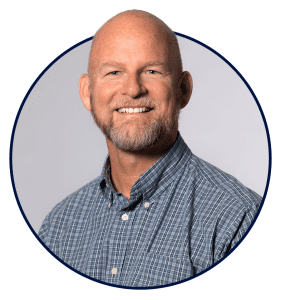 James Whitford
James Whitford
Founder & CEO
Read more from James
Listen to this article:
For the first time in more than 75 years, “democracy” (majority rule) appears in English text more than “republic” (representative rule). That blurring of lines signals the potential loss of our collective ability to distinguish the two and threatens our national birthright as imposters seek to undermine so much of what we hold dear. Benjamin Franklin understood the threat, reflected in his famous response to a woman outside the Constitutional Convention about the kind of government she would have: “A republic if you can keep it.”
Yet there’s reason to be hopeful. There are many today — myself included — betting on a resurgence of “republic” and a political revival to match. Fair warning, though. Those of us thrilled at the prospect of resurgent republicanism are excited about the word living up to its Latin roots — an affair or matter of the people. But the elevated importance of property rights, privacy, and individual freedom may also signal tougher times for you and me as we assume greater responsibility for self-governance, and private charity. Here’s a story to illustrate my point.
An angry young man stood on the sidewalk outside our mission wildly waving a piece of paper above his head stomping and yelling. “They can’t do this! How can they do this!?” It was his paycheck. I thought he was miffed about the taxes. Instead, it was a considerable garnish for child support. “Someone should have told me before I had a kid!” he exclaimed.
I couldn’t help myself. “Who should have told you?” I asked. His response? “The government, I guess.”
I share that story in my new book, The Crisis of Dependency, because it speaks to how willing Americans are to turn to government for answers, education, food, housing, medical care — and even advice on being a better dad. If I had a dollar for every time some poor soul told me he was waiting on government help, I could have paid off the debt of a college graduate still hoping the government might pick up the tab.
The real tragedy is not the government’s slow response to individual needs but that those individuals turn to government first instead of their friends, family or community.
That’s more than mere supposition. Currently, approximately 5 million people above the poverty line are dependent on the anti-poverty program SNAP (food stamps) and 74% of people below 200% of the federal poverty level depend on a plethora of similar programs. All the while, the development of social capital takes a hit as the poor remain three times as likely to report they’re lonely.
Tocqueville was right in his observation that private charity “established valuable ties between the rich and the poor” and that “legal charity” or government welfare “breaks the only link which could be established between them.” In another writing, he points out when dependence on government increases “the more will individuals, losing the notion of combining together, require its assistance.” That “assistance” further diminishes the proper role family, friends, and community should play in offering a hand up.
We are in a crisis of dependency in America. And as a new Administration with its new Department of Government Efficiency, and a conservative Court work to claw back the administrative state’s overreach, we would be wise to prepare for a crisis of withdrawal as well. The resulting “detox trimmers” will not be a malady reserved for the dependent poor, but a dependent America whose people have historically, especially during national crises, traded autonomy and freedom for federal relief. Rarely has there been a chance to get it back.
Indeed, we are entering a unique season of opportunity that predates LBJ’s War on Poverty when individual initiative and personal responsibility came under friendly fire. But like all chances for redemption, it must be seized through effort. If we fail in the diligent application of real compassion, willing neighborliness, a desire to build community, and sacrifice, we risk what Thomas Jefferson warned a friend about in a letter penned to him in 1816: “The further the departure from direct and constant control by the citizenry, the less has the government the ingredient of republicanism.”
Yes, direct and constant control is work — but the resurgence of republicanism is worth it. Who knows, maybe the word’s use will spike again to a new peak — like it did for twenty-five years after the American Revolution.
Not for re-publication
This article was originally published by DC Journal


 BETHANY HERRON
BETHANY HERRON


